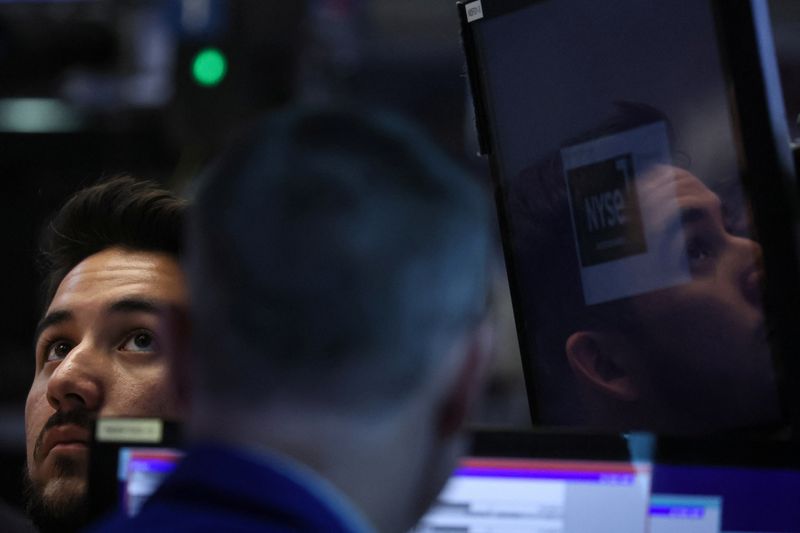
Top 5 things to watch in markets in the week ahead
Investing.com — The US is to release inflation numbers which will be closely watched as investors try to gauge the future path of Federal Reserve interest rates, while the start of the holiday shopping season and more retail earnings will show how consumer spending is holding up in the face of higher prices. Here’s your look at what’s happening in markets for the week ahead.
Inflation data
The US is set to release the Personal Consumption Expenditures Price index, the Federal Reserve’s preferred gauge of underlying inflation, on Wednesday.
Economists are expecting the PCE index to have risen 2.3% annually in October.
While the U.S. is due to release November data on both consumer and producer prices before the Fed’s next meeting on Dec. 17-18 this will be the final PCE report before then.
Recent stubborn inflation data has seen the Fed take a cautious stance towards further interest rate cuts.
Market expectations around whether the Fed will deliver another 25-basis point cut in December or pause are split amid uncertainty over the potential for a rebound in inflation under the incoming Trump administration.
Black Friday
Investors will get fresh insights into the health of the U.S. consumer and the retail sector in the coming week as Black Friday marks the start of the holiday shopping season, which will likely indicate how shoppers are coping with higher prices.
Earnings results from two major retailers last week gave two very different perspectives. On Tuesday, Walmart (NYSE:WMT) raised its annual sales and profit forecast for the third consecutive time, while Target shares dropped sharply on Wednesday after it forecast holiday-quarter comparable sales and profit below estimates.
A fresh batch of retail earnings are also due in the coming days, with Best Buy (NYSE:BBY), Macy’s (NYSE:M), Nordstrom (NYSE:JWN) and Urban Outfitters (NASDAQ:URBN) all due to report.
Trump trade
The ‘Trump trade’ looks likely to remain a key driver of market activity for now.
Investors who bet on “buy crypto and the dollar, sell foreign assets or green” are still in profit, despite a slight slowdown in momentum. Bitcoin is nearing $100,000, up around 50% since early October, when markets favored a Trump election victory. The dollar index has risen 3.6%.
Clean energy, a Trump target, is the worst performer, with iShares’ clean energy ETF down nearly 14%. The Mexican peso has lost more than 4%, while European equities are off around 3%.
However, resistance to Trump-driven trades could increase as concerns about stock valuations grow or geopolitical risks challenge the rally in risk assets.
Oil prices
Oil prices rose around 1% on Friday, to settle at the highest level in two weeks, as an escalation in the war in Ukraine boosted geopolitical risk premium.
Both crude benchmarks ended the week with gains of about 6% as Moscow stepped up its offensive after Britain and the U.S. allowed Kyiv to strike deeper into Russia with their missiles.
Meanwhile, China, the world’s largest oil importer, announced policy measures to boost trade, including support for energy product imports, amid worries over the incoming Trump administration’s threats to impose tariffs.
Eurozone inflation
The Eurozone is to release what will be closely watched inflation data on Friday as markets try to gauge the path of European Central Bank monetary policy.
Inflation rebounded to 2% in October after falling below the ECB’s 2% target the prior month.
Data on Friday showed that business activity in the bloc deteriorated sharply this month as the services industry contracted and manufacturing sank deeper into recession.
The ECB has cut rates three times this year and markets are expecting another 25-basis point rate cut in December amid concerns over the economic outlook for the region.
Meanwhile, ratings agency Standard and Poor’s is due to review France’s credit rating after Fitch and Moody recently downgraded their outlooks to negative.

